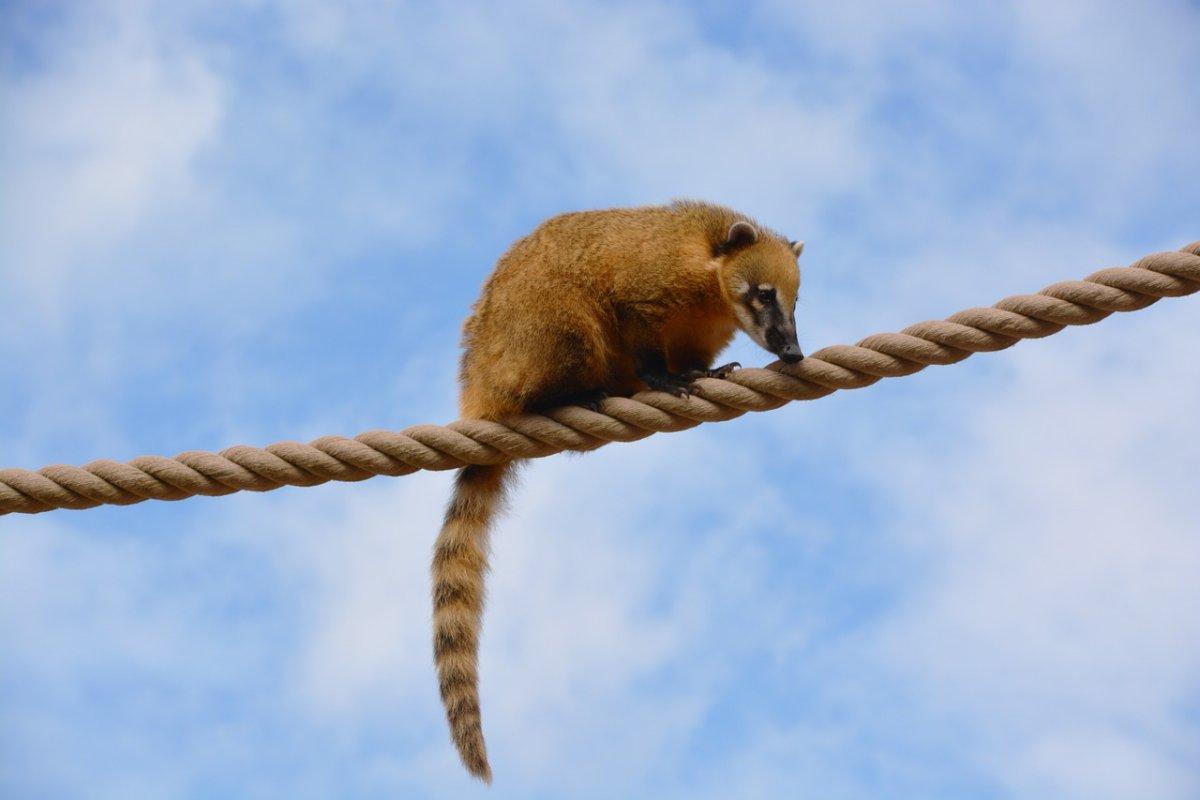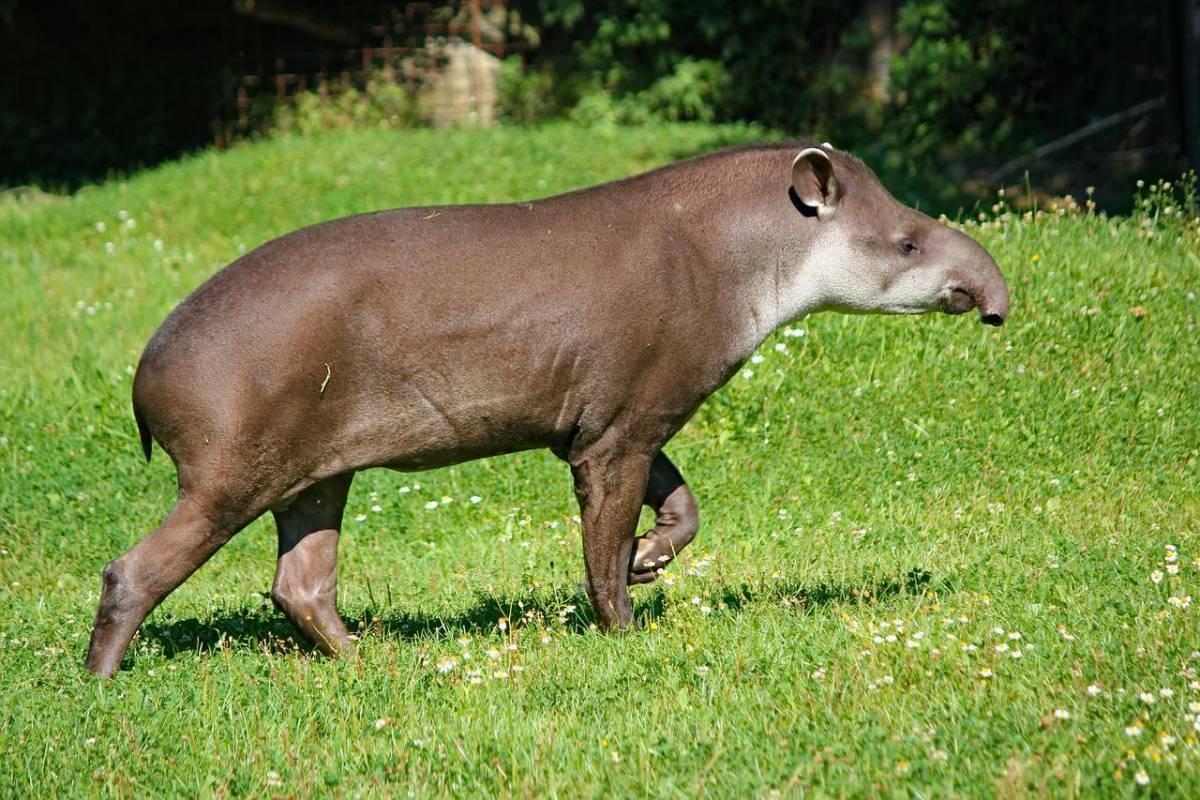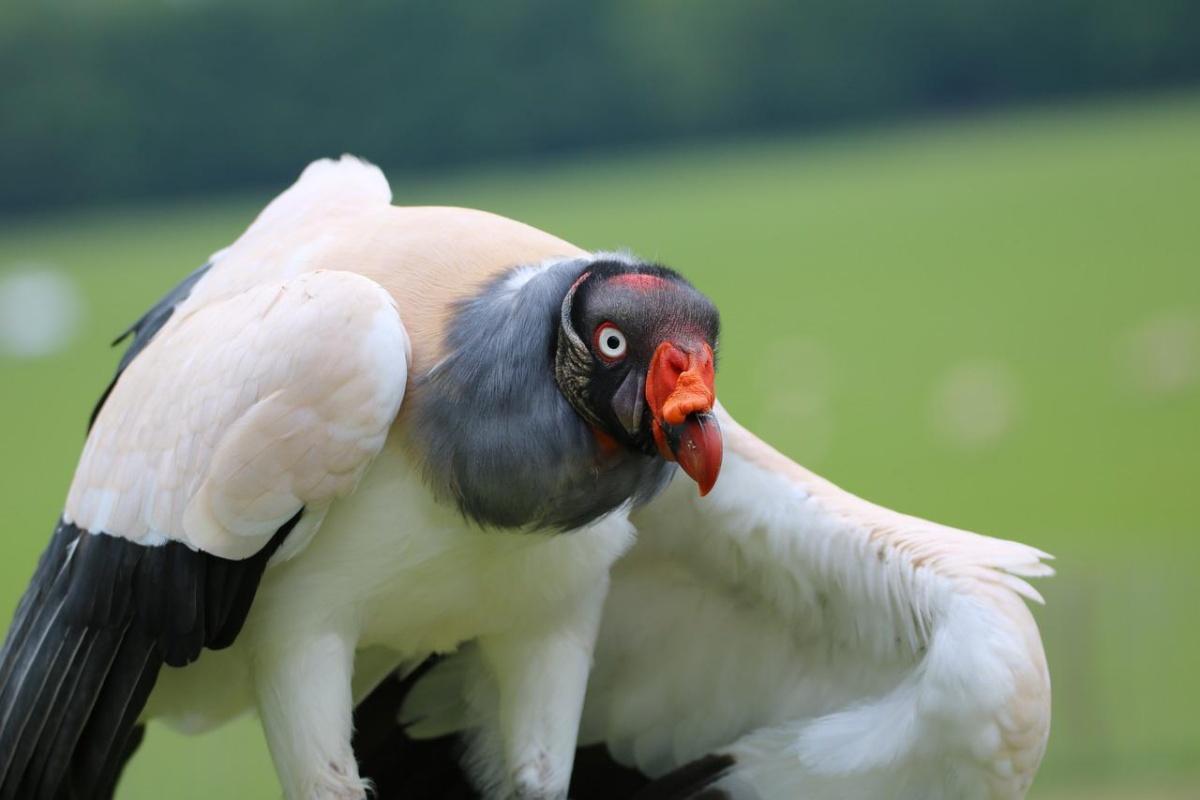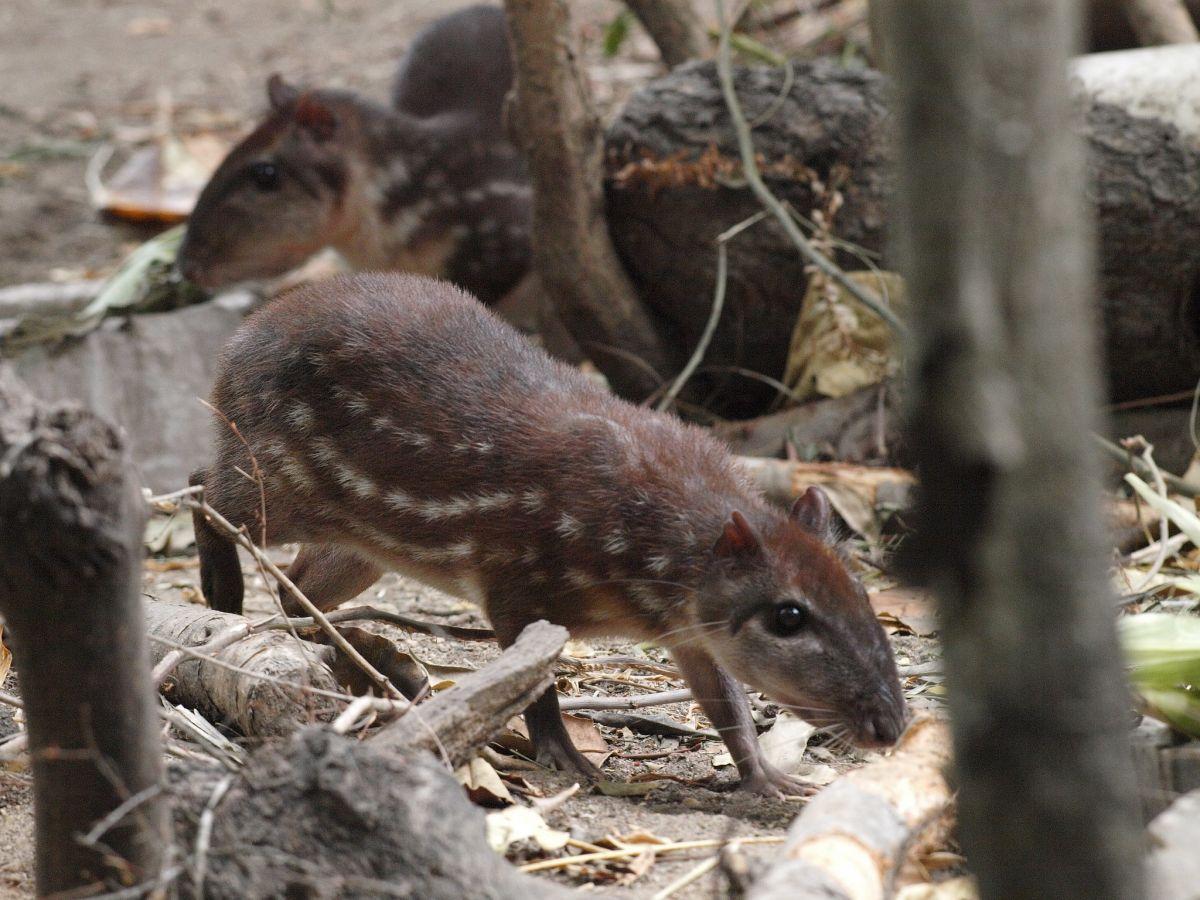17 Wild Animals in Paraguay [Wildlife in Paraguay]
Want to know more about the wildlife in Paraguay?
Discover 17 wild animals in Paraguay in this post, as well as interesting facts about them. 🇵🇾
TABLE OF CONTENTS [show]
Learn All About Paraguayan Animals
Ready to learn all about Paraguayan animals?
I’ve always been fascinated by animals, and by how they can be so different from one country to another. In this guide, we’ll focus on the many animals Paraguay has on the land, in the sky, and underwater.
I’ve split the guide into 5 categories:
- Native animals from Paraguay
- Endangered animals of Paraguay
- What is Paraguay national animal?
- How many animals native to Paraguay?
- Which venomous animals are found in Paraguay?
Let’s dive in right away with our first category!
Native Animals from Paraguay
Paraguay is one of two landlocked South American countries located in the central part of the continent, alongside Bolivia. It has an important colonial history, being the first capital of Río de la Plata, used to be a Spanish colony, and is characterized by several authoritarian governments with nationalist and isolationist policies. It is bordered by Brazil, Bolivia and Brazil, and its capital and largest city is Asunción, which counts more than 525,000 inhabitants (but more than 2,722,000 if you include the metropolitan area).
An interesting part of the country that I wanted to tackle is its wildlife. In light of that, I have listed the best of it, and I hope you will love learning what animals live in Paraguay.
Here’s the Paraguay animals list.
1. Black howler

- Name: Black howler
- Scientific name: Alouatta caraya
- Conservation status:
The black howler, also known as the black-and-gold howler, is one of the largest species of New World monkeys. It can be found in the central parts of South America, primarily in Paraguay, Brazil, Argentina, Uruguay, and Bolivia.
As its name implies, this monkey is known for its loud howl that can be heard as far as 2 km / 1.24 mi. The main threats it has to face in Paraguay as well as in neighboring countries are habitat degradation, hunting pressure, and disease outbreak.
2. Nine-banded armadillo

- Name: Nine-banded armadillo
- Scientific name: Dasypus novemcinctus
- Conservation status:
The nine-banded armadillo, also known as the nine-banded long-nosed armadillo or the common long-nosed armadillo, is one of the species of armadillos that can be found in North, Central, and South America. It is in fact the most widespread of all armadillos, and it is both solitary and nocturnal.
This armadillo can jump about 91 to 122 cm / 3 to 4 ft up in the air, making it a real danger on roads.
3. Giant anteater

- Name: Giant anteater
- Scientific name: Myrmecophaga tridactyla
- Conservation status:
The giant anteater is a large species of mammal native to Central and South America. It is the largest of all 4 anteaters and is primarily terrestrial, opposite to its counterparts. Although it has no teeth nor is it capable of much jaw movement, it has a particularly long, sticky tongue it uses to feed on ants and termites.
This species is considered vulnerable to extinction because of local extinctions, roadkills, habitat loss, and attacks by dogs. While it disappeared from parts of Paraguay, it is still present in the country.
4. Brown-throated sloth

- Name: Brown-throated sloth
- Scientific name: Bradypus variegatus
- Conservation status:
The brown-throated sloth is a species of three-toed sloth native to Central and South America. It is fairly common and widespread, and it inhabits evergreen and dry forests, as well as highly perturbed areas, generally at elevations of up to 1,200 m / 3,900 ft above sea level.
You must know sloths for their tendency to move slowly and to sleep a lot: the brown-throated sloth sleeps 15 to 18 hours every day, and is only active for brief periods of time!
5. Jaguar

- Name: Jaguar
- Scientific name: Panthera onca
- Conservation status:
The jaguar is the most iconic South American animal, and the biggest cat in the Americas (and third-largest in the world). Its range has greatly shrunk over the years, and it can be found in the south of Paraguay and northern Argentina and north into southwestern United States and Mexico.
In Paraguay and several other countries, it is illegal to trade jaguars’ body parts, but poaching remains a threat.
6. South American coati

- Name: South American coati
- Scientific name: Nasua nasua
- Conservation status:
The South American coati, also known as the ring-tailed coati, is a species of coati native to tropical and subtropical areas of South America. It lives in lowland forests at altitudes up to 2,500 m / 8,200 ft above sea level.
This coati is diurnal and lives in trees and on the ground. While it is omnivorous, it primarily feeds on fruit, invertebrates, small animals, and eggs.
7. South American tapir

- Name: South American tapir
- Scientific name: Tapirus terrestris
- Conservation status:
The South American tapir, also known as the Amazonian tapir, the Brazilian tapir, the lowland tapir, or the maned tapir, is a species of tapir native to much of the northern half of South America. Besides, it is the largest native terrestrial mammal in the Amazon.
This mammal has a unique snout, ideal to browse on leaves and feed on buds, shoots, and small branches. It is an excellent diver and swimmer and can move pretty quickly on the ground as well.
8. Chacoan peccary

- Name: Chacoan peccary
- Scientific name: Catagonus wagneri
- Conservation status:
The Chacoan peccary, also known as the tagua, is a species of peccary native to the Gran Chaco, a region in Paraguay, Bolivia, and Argentina.
Interestingly enough, it was first discovered based on fossils and was thought to be extinct, but the animal was found 41 years after its first description and was well-known by the native people. There are established preserves in Paraguay to protect the endangered Chacoan peccary, but the law isn’t really enforced.
9. Lowland paca
- Name: Lowland paca
- Scientific name: Cuniculus paca
- Conservation status:
The lowland paca, also known as the spotted paca, is a large species of rodent native to much of South America, Central America, and Mexico. It has been introduced to the island of Cuba and inhabits subtropical and tropical parts of the Americas.
The word “paca” comes from the Tupi language, and it means “alert” or “awaken”. Despite being indeed quickly alerted, the lowland paca is considered an agricultural pest for several food crops.
10. Bare-throated bellbird
- Name: Bare-throated bellbird
- Scientific name: Procnias nudicollis
- Conservation status:
The bare-throated bellbird is the national bird of Paraguay. It inhabits the moist subtropical and tropical forests of the country, and has one of the loudest bird calls in the world, literally sounding like a hammer striking an anvil!
As its name suggests, the bare-throated bellbird has a bare throat, face, and beak. It is listed as near threatened with extinction, primarily because of habitat loss and capture for the pet bird trade.
11. Hyacinth macaw

- Name: Hyacinth macaw
- Scientific name: Anodorhynchus hyacinthinus
- Conservation status:
The hyacinth macaw is a truly beautiful species of macaw that you might have never heard of. Also known as the hyacinthine macaw, it is native to some areas of central and eastern South America, including northeastern Paraguay.
One of the main threats this macaw has to face is poaching and capture for the illegal wildlife trade. Due to the young almost never surviving a capture, poachers focus on adults, which quickly decreases the population of the hyacinth macaw.
12. Pampas deer
- Name: Pampas deer
- Scientific name: Ozotoceros bezoarticus
- Conservation status:
The Pampas deer is a species of deer native to the lowlands and grasslands of South America. It inhabits hills and usually stays around grass high enough to completely hide it. Although it is pretty numerous (about 80,000 individuals), the Pampas deer is seriously threatened by habitat loss and overhunting.
This deer largely feeds on plant matter. Believe it or not, 2 days after giving birth, the females go into heat and mate immediately!
13. Guanaco

- Name: Guanaco
- Scientific name: Lama guanicoe
- Conservation status:
The guanaco is a species of camelid native to South America. It is one of the closest relatives of the llama and lives at lower elevations than its other cousin, the vicuña.
This camelid is herbivorous and feeds on shrubs, grasses, herbs, fungi, and cacti. Its Paraguayan population is pretty small, about 20 to 100 individuals; however, in other countries such as Argentina, there are several millions of specimens!
14. Giant otter

- Name: Giant otter
- Scientific name: Pteronura brasiliensis
- Conservation status:
The giant otter, also known as the giant river otter, is a species of semi-aquatic mammal native to South America. Not only is it the largest otter, but it is also the longest mustelid in the world. Opposite to other mustelids, it is pretty social and lives in groups of up to 8 individuals.
The range of this otter is fragmented, and it is not sure whether it can still be found in Paraguay or not. If so, it would be found in the extreme eastern and northeastern parts of the country.
15. King vulture

- Name: King vulture
- Scientific name: Sarcoramphus papa
- Conservation status:
The king vulture is a large species of New World vulture native to Central America. It inhabits tropical lowland forests from southern Mexico to northern Argentina, and although mainly white, it has a unique face skin with bright colors such as yellow, orange, and red.
It is known as the “white crow” in Paraguay and is a scavenger that feeds on anything, from cattle to beached fish and lizards.
16. Harpy eagle

- Name: Harpy eagle
- Scientific name: Harpia harpyja
- Conservation status:
The harpy eagle, also known as the American harpy eagle, is a large species of bird of prey native to Central and South America. It is the most powerful raptor within its range and is one of the largest eagles in the world.
This eagle is an important part of South American culture, being present in Mayan, Incan, and Aztec mythologies, as well as Venezuela’s currency and Panama’s coat of arms.
17. Ocelot

- Name: Ocelot
- Scientific name: Leopardus pardalis
- Conservation status:
The ocelot is a medium-sized species of wild cat native to Central and South America. It is one of the few relatively large felids that is considered of least concern, but it still suffers from poaching for its skin, as well as habitat loss.
While the ocelot can mate at any time of the year, it was observed to do so in the fall in Paraguay and Argentina.
—
So there you have them, these were my 17 native animals of Paraguay. I hope you enjoyed this list and that you learned something new today.
In case you want to learn more about animals in the country, feel free to keep reading, as I still have lots of things to tell you about:
Endangered Animals of Paraguay
This is definitely the saddest part of the list, but it is very important to raise awareness. Because of this, let’s go through the list of endangered animals in Paraguay.
Here are the animals in danger of extinction in Paraguay.
- None
- Purple-winged ground dove
- Glaucous macaw
- Brazilian merganser
- Eskimo curlew
- Liolaemus azarai
- and 1 more…
- Vinaceous-breasted amazon
- Chaco side-necked turtle
- Crowned solitary eagle
- Chacoan peccary
- Black-fronted piping guan
- and 10 more…
To see the full list of endangered species in Paraguay, head over to the International Union for Conservation of Nature’s Red List.
What is the National Animal of Paraguay?
The national animal of Paraguay is the Pampas fox.
Also known as the Pampas zorro, the Azara’s zorro, or the gray Pampean fox, it is a medium-sized species of fox native to the Pampas of South America. It can be found throughout most of Paraguay. Despite being considered the national animal, it is often considered a threat to agriculture.
This fox lives a solitary life and is nocturnal. It is particularly opportunistic and feeds on a wide variety of food sources, fruit, rodents, birds, hares, and carrion.

How Many Animals Native to Paraguay?
What is the diversity of native animals in Paraguay?
Let’s look at the total number of species of Chordata (mammals, birds, fishes, and reptiles).
Total number of animal species in Paraguay: 1,187 (14,422 in total in South America)
Which venomous animals are found in Paraguay?
The only venomous animals you will find in Paraguay are 6 species of snakes, namely the jararaca, the South American rattlesnake, the false water cobra, the crossed pit viper, the jararacussu, and the painted coral snake.
Although there is only a handful of them, some of these species are extremely dangerous and should be avoided at all costs!
More About Animals in the World!
Loved these Paraguay wildlife facts? Want to see what animals live in other countries?
Then check out these posts:
Or click here to see ALL the facts up on the blog! Spoiler alert: there’s A LOT of them.
Share the knowledge! Click on the buttons below to share information about these famous animals found in Paraguay with your friends, and help them learn more about the world 🙂




![25 Wild Animals in Sweden [Wildlife in Sweden]](https://www.kevmrc.com/wp-content/uploads/2022/10/25-wild-animals-in-sweden.jpg)
![12 Wild Animals in Mongolia [Wildlife in Mongolia]](https://www.kevmrc.com/wp-content/uploads/2022/12/12-wild-animals-in-mongolia.jpg)
![13 Wild Animals in Iowa [Wildlife in Iowa]](https://www.kevmrc.com/wp-content/uploads/2023/07/13-wild-animals-in-iowa-usa.jpg)